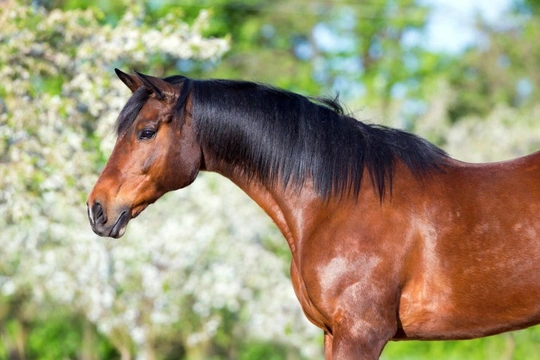
What Should Horse Owners be Prepared for this Spring
Spring is lurking just around the corner although it is rather hard to believe with the current miserable weather. But it will arrive and the mud will disappear and after all this rain, the grass is going to take off. So what should horse owners be aware of and prepared for as the season changes?
Laminitis
Often but not wholly caused by the sugar content in good grass, the spring growth in April and May is the sweetest grass of the season and your horse will be really looking forward to it. Spring grass intake needs to be carefully monitored in all horses but particularly those who are prone to laminitis – horses and ponies with Cushings or Equine Metabolic Syndrome – and those with a genetic predisposition to the disease so native ponies who are always good doers. It might seem mean to restrict your pony or horse after such a horrible winter but better that than six weeks box rest because of a bout of laminitis.
Pollen
The trees are already coming into bud and tree pollen will start to invade the atmosphere in March with grass and flower pollens following a little later. Some horses respond to these environmental triggers which can vary from year to year, to some extent controlled by what is growing and the actual weather within the season. If your horse reacts to pollens and requires airway support, ensure you have the appropriate feed supplements or prescription medication ready.
Sunburn
Hardly seems possible to think that there will be enough sun and it will be warm enough to burn pink skin but that time will come. Horses with pink muzzles are vulnerable and also those with pink skin above the hoof. Water repellent Factor 50 barrier creams are the best way forward for these areas, ones prescribed for infants will always be safe to use on your horse but patch test first just in case.
Fly protection
Some horses tolerate flies better than others and a fly rug is one option to prevent your horse from being tormented by them. The fly season varies, it starts in April with the smaller black flies that you might find in your house, most horses ignore these but some horses are troubled by them. The actual horse fly season comes a bit later on in the summer and usually finishes around harvest time. Horse flies bite and horses can be really bothered by them. Fly rugs can be very hot when the weather is warm so another option is to turn your horse out at dusk and bring him in at dawn, this keeps fly predation to a minimum and can avoid the need to use a fly rug. It also means that if the weather is exceptionally hot, the horse is out in the coolest period of any 24 hours. Fly masks are always a good option as they protect the horse’s eyes from the risk of infection and cross contamination transferred by flies that seem to make a beeline for them – the eyes are always a particular target for flies. Flies can cause irritation and swelling and often trouble the horse enough so that he is constantly rubbing his eyes thereby further increasing the risk of injury by scratching the surface of the eye or damage because of a foreign body.
Summer Grazing
Check the surface of the fields and the grass growth. If there is weed predation and this won’t become apparent until spring has actually begun, it might be worth spraying the pasture first before putting the horses on it; this is the best opportunity you will get to do it. Horses need to be kept off the land for usually around two weeks after spraying. Ensure all the fencing is safe and secure and has not deteriorated throughout the winter or suffered any damage in high winds or from fallen branches.
Good housekeeping
Once spring arrives, it is time to clear up after the winter. Horses should be moved from their winter grazing with a gradual introduction to spring grass. Once they have left their winter paddocks, it is time to show them some TLC:-
- Fencing should be checked and repaired as necessary
- Move any field shelters so the ground can dry out and recover
- Any adjacent ditches should be cleared out
- Once the land begins to dry out but before it is too dry, roll it with a weighted roller which can be pulled behind a small tractor or 4x4
- Sew grass and fertilise the pasture as necessary
- Treat weeds as they emerge through the growing season with a mixture of hand pulling, spraying and topping
- Keep grass growth to no higher than the top of your wellington boot to encourage a denser sward
- Put hogging down in poached gateways once they are dry and pack down firmly
- Leave the land to rest and recover before the next winter
The Tack Room
Wash and repair stable rugs and wash and re-proof turn out rugs. Some yards have industrial machines provided so this can be done on the yard but there are plenty of companies who offer a rug cleaning service and who will collect your rugs and return them to you clean and packed a couple of weeks later. Find somewhere warm and dry to store them which is vermin free until next winter.
And finally, equip yourself with some serious equipment to help shed that winter coat. There are a few different products on the market which will help that old fur on its way and on that first warm spring day, a good bath never goes amiss.



